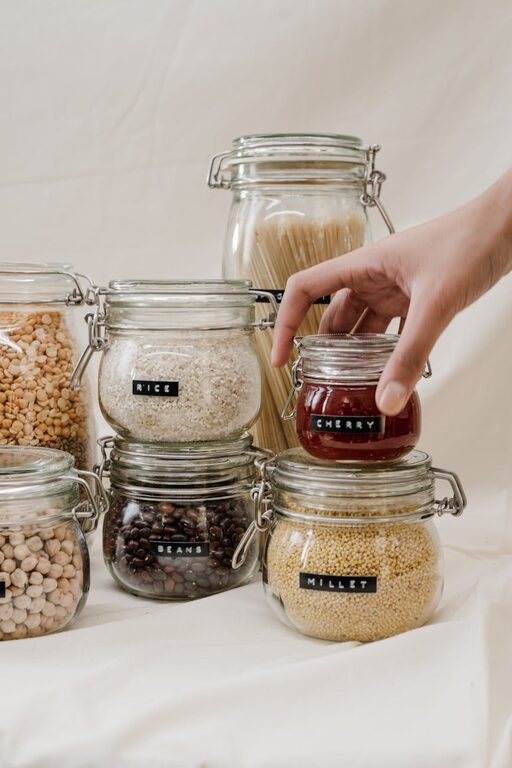Planning meals around pantry staples is a smart way to simplify cooking, save money, and reduce food waste. Your pantry likely holds a treasure trove of ingredients that can be turned into satisfying dishes with just a little planning and creativity. Whether you’re aiming to stretch your grocery budget or avoid last-minute trips to the store, learning to plan meals using what you already have can make daily cooking much easier.
In this post, we’ll explore practical steps and tips for planning meals using pantry staples effectively.
Why Plan Meals Around Pantry Staples?
Before diving into the “how,” it’s helpful to understand why planning meals from pantry staples is beneficial:
– Saves Time: Knowing what you have on hand lets you plan quickly without figuring out complex shopping lists.
– Costs Less: Using existing ingredients reduces the need for extra purchases.
– Reduces Waste: You use up what’s already stored, minimizing expired or forgotten food.
– Less Stress: Meal planning can feel overwhelming; pantry-based planning narrows your focus and sparks creativity.
Step 1: Take Inventory of Your Pantry Staples
Start by knowing exactly what’s available. Set aside some time to go through your pantry, fridge, and freezer. Check for staples like:
– Grains (rice, pasta, quinoa, couscous)
– Canned goods (beans, tomatoes, tuna, vegetables)
– Baking essentials (flour, sugar, baking powder)
– Oils and vinegars
– Dried herbs and spices
– Broths and stocks
– Condiments (soy sauce, mustard, hot sauce)
– Frozen vegetables or proteins
Write everything down or use an app designed for pantry tracking. This inventory becomes your meal-planning toolbox.
Step 2: Organize Pantry Staples for Easy Access
Arrange your pantry so you can quickly see and reach the staples. Group similar items together (e.g., all canned beans in one spot, pasta in another). Use clear containers or labels if needed. A tidy pantry encourages better use and helps prevent items from being overlooked.
Step 3: Plan Meal Themes Based on Common Staples
Thinking in themes can simplify meal planning. For example:
– Italian Night: Use pasta, canned tomatoes, garlic, and herbs to prepare pasta dishes or stews.
– Mexican-Inspired: Combine rice, canned beans, corn, and spices like cumin and chili powder for tacos or burrito bowls.
– Stir Fry: Use rice or noodles with soy sauce, frozen veggies, and any available protein.
– Soup or Stew: Use broth, canned tomatoes, beans, frozen vegetables, and herbs to make hearty soups.
Creating themes around what you have helps generate meal ideas quickly.
Step 4: Mix and Match Ingredients Creatively
Pantry staples often pair well with fresh or frozen ingredients to enhance flavor and nutrition. Consider buying minimal fresh produce or proteins weekly to complement your pantry items. For example:
– Add fresh spinach or kale to canned bean soups.
– Toss canned tuna with pasta and a squeeze of lemon.
– Stir fresh herbs into rice dishes made from pantry grains.
Experiment with combining items in new ways to keep meals interesting.
Step 5: Use Recipes as a Starting Point
Having a few reliable recipes that center pantry staples can be a helpful anchor. Search for recipes with ingredients like canned beans, pasta, rice, or basic sauces and spices. Save them in a folder or bookmark them online for easy access.
Some simple dishes to consider:
– Chickpea curry with canned tomatoes and spices
– Tuna pasta salad with canned tuna and pasta
– Lentil stew with dried lentils and stock
– Fried rice with leftover rice and frozen veggies
Step 6: Prepare in Batches When Possible
Batch cooking is a great way to multiply the benefits of pantry staple planning. Cook larger portions of rice, beans, or pasta dishes and store leftovers in the fridge or freezer. This approach ensures quick meals are always available on busy days.
Step 7: Keep Your Pantry Restocked Strategically
Every time you use pantry staples, replace them promptly so you always have essentials on hand. Note which items you use most frequently and keep extras stocked. This practice reduces last-minute shopping trips and keeps meal planning smooth.
Bonus Tips for Pantry Meal Planning Success
– Stay Flexible: Don’t worry about following your plan rigidly. Use it as a guide to adapt meal choices based on cravings and availability.
– Experiment with Spices: A few well-chosen spices can transform simple staples into flavorful meals.
– Label Opened Packages: Use labels to record opening dates for items like flours or grains to keep them fresh.
– Include Protein Options: Stock up on canned tuna, beans, and lentils to ensure balanced meals.
– Use Online Tools: Many apps and websites assist with meal planning based on pantry ingredients.
Sample One-Week Pantry Staple Meal Plan
| Day | Meal Idea | Key Pantry Staples Used |
|———–|————————————–|———————————————-|
| Monday | Pasta with tomato and herb sauce | Pasta, canned tomatoes, dried herbs |
| Tuesday | Bean chili with rice | Canned beans, canned tomatoes, rice, chili powder |
| Wednesday | Tuna salad with pasta and veggies | Canned tuna, pasta, olive oil, canned corn |
| Thursday | Lentil soup with veggies | Dried lentils, broth, canned tomatoes |
| Friday | Fried rice with frozen vegetables | Rice, soy sauce, frozen mixed vegetables |
| Saturday | Chickpea curry with flatbread | Canned chickpeas, curry powder, canned coconut milk (optional) |
| Sunday | Vegetable stir fry with noodles | Noodles, soy sauce, frozen or canned vegetables |
Final Thoughts
Planning meals from pantry staples is a practical and rewarding approach to home cooking. It encourages resourcefulness, cuts costs, and makes mealtime stress-free. By keeping an organized pantry, knowing your staples, and using simple planning strategies, you can confidently create diverse and tasty meals every day.
Start small—take a pantry inventory and pick a meal theme or two this week. Over time, you’ll build a habit that makes cooking enjoyable and effortless!
Happy cooking!


